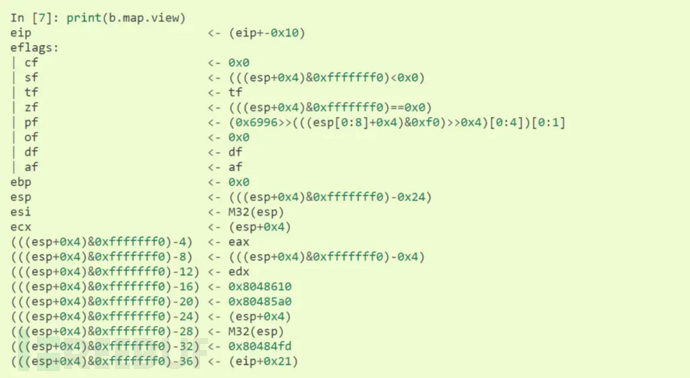长度最小的子数组
题目链接:
209. 长度最小的子数组 - 力扣(LeetCode) https://leetcode.cn/problems/minimum-size-subarray-sum/description/
https://leetcode.cn/problems/minimum-size-subarray-sum/description/
- 算法原理

- 代码步骤:
- 设置left=0,right=0
- 设置sum=0,len=0
- 遍历left与right向右移动
- 记录每次的sum,并于target比较
- 当sum>=target时,记录此时的len,结束right的循环。
- 当right到达size的时候结束。
- 代码展示
class Solution {
public:
int minSubArrayLen(int target, vector<int>& nums)
{
int sum = 0, len = 0;
int n = nums.size();
//出窗口
for(int left = 0, right = 0; left < n && right < n; left++)
{
//进窗口
for(; right < n; right++)
{
sum += nums[right];
if(sum >= target)
{
if(len == 0)
{
len = right - left + 1;
}
else
{
len = min(len, right - left + 1);
}
break;
}
}
//将出窗口的值减去
if(right < n && left < n)
sum = sum - nums[left] - nums[right];
}
return len;
}
};无重复字符的最长子 串
题目链接:
无重复字符的最长子串 https://leetcode.cn/problems/longest-substring-without-repeating-characters/description/
https://leetcode.cn/problems/longest-substring-without-repeating-characters/description/
- 算法原理

- 代码步骤:

- 代码展示
class Solution
{
public:
int lengthOfLongestSubstring(string s)
{
int n = s.size();
//使用数组模拟一个哈希表
int hash[128] = { 0 };
//记录长度
int len = 0;
for(int left = 0, right = 0; right < n; right++)
{
//判断窗口是否出现与s[right]重复元素
if(!hash[s[right]])
{
//没有出现重复元素
hash[s[right]]++;
}
else
{
//出现重复元素
while(left <= right)
{
//判断窗口里有无和s[right]重复元素
if(hash[s[right]])
{
//有重复元素
hash[s[left++]]--;
}
else
{
//没有重复元素
hash[s[right]]++;
break;
}
}
}
//记录长度并比较上次长度
len = max(len, (right - left + 1));
}
return len;
}
};最大连续1的个数 III
题目链接:
最大连续的1的个数 III https://leetcode.cn/problems/max-consecutive-ones-iii/description/
https://leetcode.cn/problems/max-consecutive-ones-iii/description/
- 算法原理

- 代码步骤:

- 代码展示
class Solution
{
public:
int longestOnes(vector<int>& nums, int k)
{
int left = 0, right = 0, zeroNums = 0, len = 0;
int n = nums.size();
//进窗口
while(right < n)
{
if(!nums[right]) zeroNums++;
while(zeroNums > k)
{
if(!nums[left++]) zeroNums--;
}
right++;
len = max(len, right - left);
}
return len;
}
};将 x 减到 0 的最小操作数
题目链接:
将 x 减到 0 的最小操作数 https://leetcode.cn/problems/minimum-operations-to-reduce-x-to-zero/description/
https://leetcode.cn/problems/minimum-operations-to-reduce-x-to-zero/description/
- 算法原理

- 代码步骤:

- 代码展示
class Solution {
public:
int minOperations(vector<int>& nums, int x)
{
int left = 0, right = 0, sum = 0, len = -1;
int n = nums.size();
for(auto e : nums)
{
sum += e;
}
int target = sum - x;
if(target < 0) return len;
sum = 0;
while(right < n)
{
sum += nums[right];
while(sum > target)
{
sum -= nums[left++];
}
if(sum == target)
{
len = max(len, right - left + 1);
}
right++;
}
if(len == -1) return len;
return n - len;
}
};水果成篮
题目链接:
水果成篮 https://leetcode.cn/problems/fruit-into-baskets/description/
https://leetcode.cn/problems/fruit-into-baskets/description/
- 算法原理

- 代码步骤:

- 代码展示
方法一:哈希表
class Solution {
public:
int totalFruit(vector<int>& fruits)
{
unordered_map<int, int> hashi;
int ret = 0;
for(int left = 0, right = 0; right < fruits.size() ; right++)
{
hashi[fruits[right]]++;
while(hashi.size() > 2)
{
hashi[fruits[left]]--;
if(hashi[fruits[left]] == 0)
{
hashi.erase(fruits[left]);
}
left++;
}
ret = max(ret, right - left + 1);
}
return ret;
}
};方法二:数组
class Solution {
public:
int totalFruit(vector<int>& fruits)
{
int hashi[100001] = { 0 };
int ret = 0;
int kinds = 0;
for(int left = 0, right = 0; right < fruits.size() ; right++)
{
if(hashi[fruits[right]] == 0)
{
kinds++;
}
hashi[fruits[right]]++;
while(kinds > 2)
{
hashi[fruits[left]]--;
if(hashi[fruits[left]] == 0)
{
kinds--;
}
left++;
}
ret = max(ret, right - left + 1);
}
return ret;
}
};找到字符串中所有字母异位词
题目链接:
找到字符串中所有字母异位词 https://leetcode.cn/problems/find-all-anagrams-in-a-string/description/
https://leetcode.cn/problems/find-all-anagrams-in-a-string/description/
- 算法原理

- 代码步骤:

- 代码展示
class Solution {
public:
vector<int> findAnagrams(string s, string p)
{
unordered_map<char, int> hashi1, hashi2;
for(auto e : p)
{
hashi1[e]++;
}
int len = p.size();
vector<int> ret;
for(int left = 0, right = 0, count = 0; right < s.size(); right++)
{
hashi2[s[right]]++;
if(hashi2[s[right]] <= hashi1[s[right]])
{
count++;
}
if(count == len)
{
ret.push_back(left);
}
if(right - left + 1 == len)
{
if(hashi2[s[left]] <= hashi1[s[left]])
{
count--;
}
hashi2[s[left]]--;
left++;
}
}
return ret;
}
};串联所有单词的子串
题目链接:
串联所有单词的子串 https://leetcode.cn/problems/substring-with-concatenation-of-all-words/description/
https://leetcode.cn/problems/substring-with-concatenation-of-all-words/description/
- 算法原理

- 代码步骤:

- 代码展示
class Solution {
public:
vector<int> findSubstring(string s, vector<string>& words)
{
vector<int> ret;
unordered_map<string, int> hashi1;
for(auto& e : words)
{
hashi1[e]++;
}
int len = words[0].size();
int n = words.size();
for(int i = 0; i < len; i++)
{
unordered_map<string, int> hashi2;
for(int left = i, right = i, count = 0; right + len <= s.size(); right += len)
{
string in = s.substr(right, len);
hashi2[in]++;
if(hashi1.count(in) && hashi2[in] <= hashi1[in])
{
count++;
}
if(right - left + 1 > n * len)
{
string out = s.substr(left, len);
if(hashi1.count(out) && hashi2[out] <= hashi1[out])
{
count--;
}
hashi2[out]--;
left += len;
}
if(count == n)
{
ret.push_back(left);
}
}
}
return ret;
}
};最小覆盖子串
题目链接:
最小覆盖子串 https://leetcode.cn/problems/minimum-window-substring/description/
https://leetcode.cn/problems/minimum-window-substring/description/
- 算法原理

- 代码步骤:

- 代码展示
class Solution {
public:
string minWindow(string s, string t)
{
int hashi1[128] = { 0 };
int minlen = INT_MAX;
int kinds = 0;
int begin = -1;
for(auto e : t)
{
hashi1[e]++;
if(hashi1[e] == 1)
{
kinds++;
}
}
int hashi2[128] = { 0 };
for(int left = 0, right = 0, count = 0; right < s.size(); right++)
{
char in = s[right];
hashi2[in]++;
if(hashi1[in] == hashi2[in])
{
count++;
}
while(count == kinds)
{
if(right - left + 1 < minlen)
{
begin = left;
minlen = right - left + 1;
}
char out = s[left];
if(hashi2[out] == hashi1[out])
{
count--;
}
hashi2[out]--;
left++;
}
}
if(begin == -1)
{
return "";
}
else return s.substr(begin, minlen);
}
};




![[数据集][目标检测]葡萄成熟度检测数据集VOC+YOLO格式1123张3类别](https://i-blog.csdnimg.cn/direct/d670a95ed9d847539da6c6cc823980c8.png)







![[项目][WebServer][CGI机制 设计]详细讲解](https://i-blog.csdnimg.cn/direct/93ade2e23c0340c781c8e6dc8f726d7f.png)




